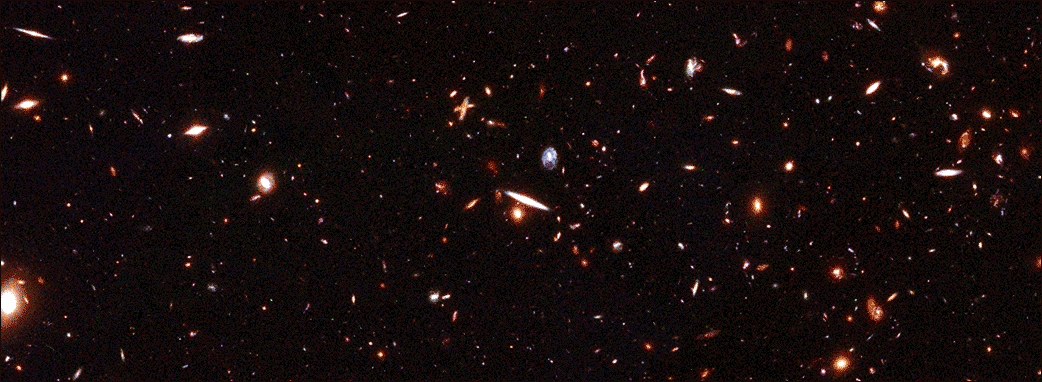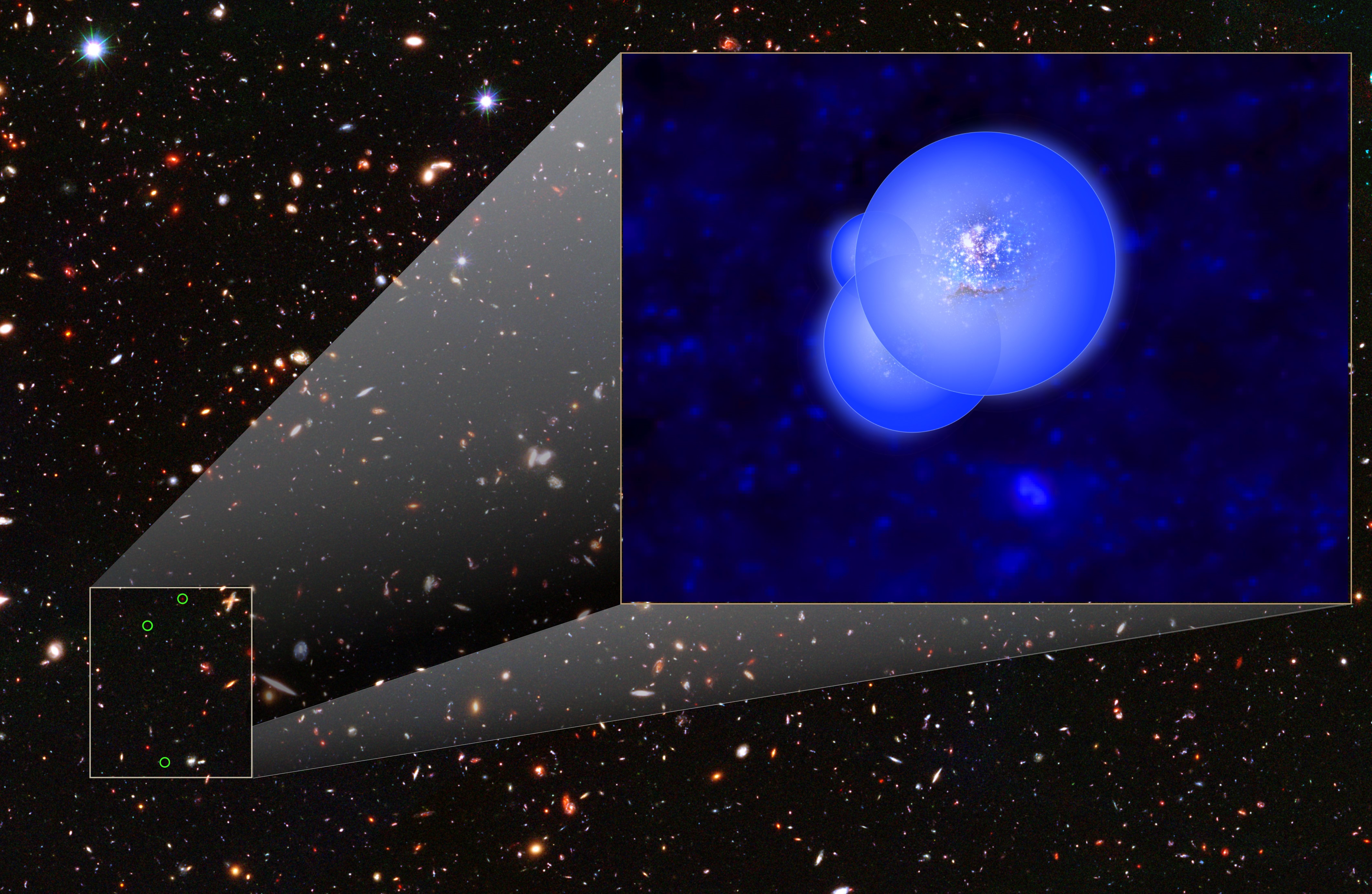Galaxy group from the epoch of reionization discovered
The universe has a 13.8 billion year long history behind it. Astronomers have already found lots of evidence to support the current model, but the more evidence there is for a theory, the better. To observe the formation of the universe, astronomers use actual time machines – their telescopes. The farther an object is away from us, the longer its light takes to reach us, and thus the farther back in time the light we are now seeing was created.
An international research group has now succeeded in observing the most distant galaxy group to date. “EGS77” is a trio of galaxies that existed at a time when the universe was only 680 million years old, which corresponds to 5 percent of the universe’s current age. Even more exciting for the astronomers, however, was the realization that EGS77 was still in the midst of an important process, namely the epoch of reionization. During this era, the universe first began to become transparent, like we know it today.
“The young universe was filled with hydrogen atoms, which attenuate ultraviolet light so strongly that they block our view of early galaxies,” says James Rhoads at NASA’s Goddard Space Flight Center in Greenbelt, Maryland. “EGS77 is the first galaxy group caught in the act of clearing out this cosmic fog.” While more distant galaxies had been discovered before, EGS77 is the first that shows the telltale emission lines of the epoch of reionization.
The process of reionization began with galaxies that ionized the hydrogen clouds surrounding them with their light. This allowed the light to move freely for the first time in bubbles formed by this process in space. At some point, the bubbles then became so large that they filled the entire universe.
The galaxies of EGS77 are approximately 2.3 million light-years apart from each other – somewhat less than Andromeda from the Milky Way.

